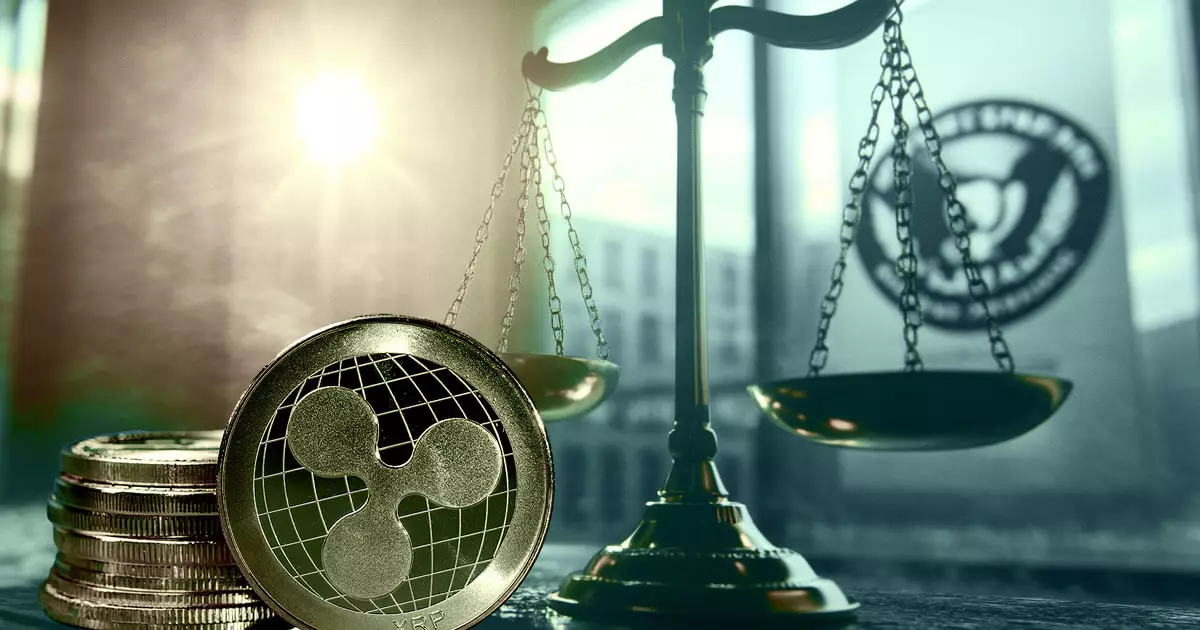The ongoing saga between Ripple and the U.S. Securities and Exchange Commission (SEC) epitomizes the turbulent waters of cryptocurrency regulation. Ripple has been embroiled in a legal battle that put the company’s very existence on the line, all because of its XRP token, which the SEC claims is an unregistered security. After nearly four years of courtroom drama, the two parties have refiled a joint request seeking to dissolve a federal court-imposed injunction, all while ambitiously pitching a settlement of $50 million. This motion stands not only as a mere settlement offer; it is a desperate attempt to escape overwhelming scrutiny and legal entanglements that could stifle innovation in the blockchain space.
The Stakes: A $125 Million Penalty
At the heart of this dispute lies a demanding $125 million penalty that Ripple currently faces, imposed by a court ruling in August 2024. Such a financial burden could cripple the firm, echoing a broader sentiment shared by many in the crypto community—that regulatory bodies sometimes appear to be more focused on punitive measures than constructive policies. Ripple’s proposal to pay $50 million, with hopes of reclaiming $75 million subsequently, hints at a search for a more balanced engagement with regulators. The latter’s willingness to negotiate a reduced fine could signal a striking change in its often hostile approach toward the crypto sector.
Market Implications of Regulatory Uncertainty
This legal struggle is not happening in isolation; it is reflective of a larger picture concerning regulatory uncertainty within the cryptocurrency market. For years, innovators and investors alike have been left in limbo, caught between ambitious technological advancements and a governing body that seems hesitant to adapt its frameworks. The reluctance to delineate clear rules has stalled many projects and led to a culture of fear—fear of enforcement actions like the one Ripple currently faces. If the SEC could pivot towards clearer guidelines as opposed to only options steeped in litigation, the entire industry could thrive, leading to the kind of economic dynamism that American entrepreneurship is renowned for.
A Shift in Legal Strategy
Ripple’s joint motion emphasizes “exceptional circumstances” warranting a reconsideration of the injunction and penalty structure. This description could be construed as a tactical play, urging the court to recognize the shifting landscape of cryptocurrency—a sector that evolves at lightning speed. The SEC’s choice to entertain this settlement might mark a turning point in its traditionally confrontational stance. In an era where so-called “crypto winter” has impacted numerous projects, a softened legal approach could offer a lifeline to struggling firms, allowing them to pivot and promote the economic benefits of blockchain technology instead of facing indefinite legal repercussions.
A Cautiously Optimistic Outlook
Ultimately, the court’s future ruling on this renewed joint request holds massive implications for both Ripple and the broader regulatory environment. Should the court grant permission to dissolve the injunction, it could breathe new life into Ripple and potentially reshape the way cryptocurrencies are governed in the U.S. Unfortunately, this still poses the risk of reinforcing the notion that companies can essentially negotiate their way out of regulatory challenges, which could set a concerning precedent. Nevertheless, a potential collaboration between Ripple and the SEC might illuminate the path toward sensible regulation, delivering a blend of innovation and accountability to a space that desperately needs it.



















Leave a Reply